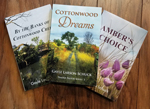Lessons from the Polio Epidemic
www.gaylelarsonschuck.com/blog
What causes it? What will cure it? When will a vaccine be found? Will we get back to normal?
These questions were being asked 70 years ago during the polio epidemic. The answers might be instructive for us today as we deal with Covid-19. Polio was around for a long time, but by 1950, the summer outbreaks were worsening and causing widespread fear.
Mayo Clinic describes polio or Poliomyelitis as “a contagious viral illness that in its most severe form causes nerve injury leading to paralysis, difficulty breathing and sometimes death.” Fear of polio closed businesses and quarantined families. The news reported the number of people infected daily. A desperate search for medical answers was underway. At its peak in the 1950s, the polio epidemic paralyzed over 35,000 people in the U.S. each year, according to the Centers for Disease Control and Prevention.
Polio usually struck in the summer. Most of its victims were children. Until a vaccine was found years later, swimming pools and theaters were closed, and other outside activities came to a halt. Children spent summers in the house, unable to play sports or be with friends.

Donna Larson Welander
The disease became personal for my own family when my sister Donna contracted polio in 1952. She was 22, married and living in Nebraska. She had a two-year-old daughter and was pregnant with her second child. Paralyzed from the waist down, Donna spent months in the hospital in Lincoln, Nebraska. Six months later, she miraculously delivered a healthy baby.
A year after being struck, she was sent to Warm Springs, Georgia, for several months for rehab therapy. Although they hoped she would be able to walk with braces and crutches, in the end she opted to use a wheelchair. She learned how to raise children and run a household from her wheelchair, and for the next 32 years she wheeled through life. I never once heard her feel sorry for herself.
Donna was only 53 when she died in 1983. At that time, little was known about post-polio syndrome. Research continues to evolve.
On March 21 this year, a USA Today headline read, “For those who survived polio, coronavirus is eerily familiar. But ultimately, science won.” The story tells how the first vaccine was introduced in 1955. Later, Albert Sabin perfected an oral vaccine which became widely distributed in 1962.
The bad news is that it took decades to find the cause and develop a vaccine that worked. There were many failed attempts. When a vaccine was found, one careless manufacturer accidently gave thousands of children the poliovirus. Today, there is still no cure for polio, although the last case originating in the U.S. was in 1979.
While polio grew into an epidemic over several decades, the coronavirus pandemic has exploded across the world in months. The CDC first announced a mysterious virus on January 21, 2020. On June 23, the United States death toll was at 122,132.

Take time to smell the flowers
Here are some useful take-aways from the polio epidemic:
Think long-term vigilance. It will take time to develop and test an effective vaccine. It may be years before it’s available worldwide. There may be mutations. There may be post-Covid-19 symptoms. We can’t shutter our businesses, schools and churches forever, but we can change our mindset to help minimize its spread.
Find serenity. Take a sabbatical from the pressures of life. Are you an “activity addict”? Author Chuck Swindoll compares our frantic lifestyles to the churning of a washing machine. Perhaps it’s time to slow down and also help our children find serenity. Refresh your spiritual life. Pray, sing, read your Bible.
Respect others. Cover your mouth if you cough or sneeze. Wash your hands and carry a sanitizer. Please forego hugs this year and give people space. I don’t wear a mask, but I am social distancing. It’s awkward when someone wants to hug or stands too close in the grocery line.
Be calm. Folks, we’re in a national medical crisis and it’s a political year. Fear and isolation can do strange things to people. This is not the time for blame games and arguments. Instead, pray for our president, governors and other leaders. They are doing their best in uncharted territory.
Be positive. Good things can come out of hard times. During the polio epidemic, Pres. Franklin Roosevelt helped found the March of Dimes, which helped Jonas Salk advance research that led to the first vaccine. The March of Dimes was the first non-profit to depend on help from small donors. It became the prototype for many other organizations. The combined amount of good they do is immeasurable.
Recommended Reading: I just finished reading I’ll Watch the Moon by Ann Tatlock. It’s a novel set in 1948 that sweeps you into the life of a family that is dealing with the polio epidemic.
Writing Update. With no book-signing events planned, I have a stock of books on hand. If you are interested in a summer deal on signed copies, contact me through the Reply form on the website.
“He has set eternity in the hearts of men.” Eccesiastes 3:11 NIV

